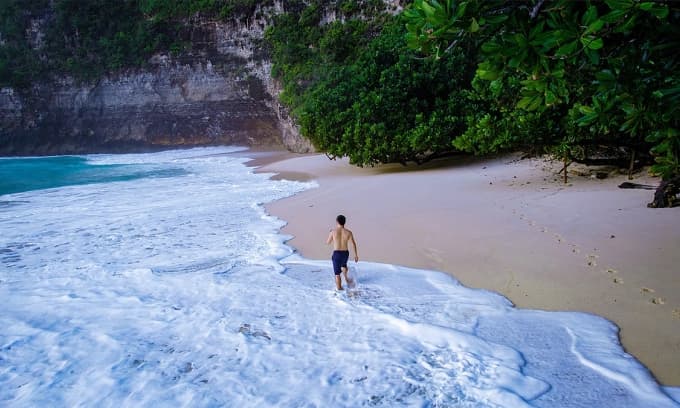Why Phu Quoc Rose to the Top
Vietnam’s Phu Quoc has been voted Asia’s most beautiful island in the 2025 Readers’ Choice Awards by Conde Nast Traveler, edging out long time favorite Bali and climbing to third place worldwide. The island scored 95.51 out of 100 across key categories such as service quality, natural scenery, beach conditions, cuisine, and hospitality. It is the only Vietnamese entry on the list and the highest placed Asian island in this year’s results. The result caps a quick rise for Phu Quoc, which ranked second in Asia last year. For Bali, which fell to sixth in Asia with 89.84 points, the shift reflects both the magnetism of newer destinations and the challenge of managing heavy visitor flows.
What the score means
More than 757,000 readers participated in the 38th edition of these awards, sharing ratings on cities, islands, hotels, resorts, cruises, spas, and airlines. Reader surveys capture sentiment, not scientific measurements, yet they often reveal where travelers feel they get the best mix of value, experience, and welcome. Phu Quoc’s score placed it just behind two United States islands on the global list and a mere 0.01 points behind Kiawah Island, which ranked second worldwide. This marks the fourth straight year Phu Quoc has appeared in the ranking, with both score and position improving each year. Its performance aligns with on-the-ground trends: international arrivals are surging, resorts continue to open, and visitor satisfaction indicators are strengthening.
How the Rankings Shifted Across Asia
This year’s Asia list puts Phu Quoc at the top, followed by Langkawi in Malaysia and Koh Samui in Thailand. The Philippines claimed two places with Boracay and Palawan, and Bali rounded out the top six after holding the regional crown last year. The swing underscores how quickly traveler preferences can change as new infrastructure comes online and policy choices shape accessibility.
A separate reader survey focused on the Asia Pacific region earlier in 2025 had ranked Phu Quoc third behind Bali and Koh Samui. By October, the balance had shifted, reflecting stronger connectivity to Phu Quoc, its 30 day visa free policy for foreign visitors, and a wave of new attractions and hospitality investments. The takeaway is simple. Close scores and momentum can lift a destination quickly when practical barriers to travel are lowered and experiences keep improving.
What Sets Phu Quoc Apart for Travelers
Phu Quoc has long stretches of pale sand, calm turquoise water, and pockets of lush forest. Beaches such as Sao and Khem have become shorthand for clear water days and soft white sand. Offshore, vibrant coral gardens draw snorkelers and divers. Inland, the island’s protected areas offer trails shaded by evergreens and pepper farms that give a taste of local agriculture.
The experience mix has expanded fast. The Hon Thom cable car, one of the longest over water cable cars in the world, carries visitors to island viewpoints and family attractions. In the south, new evening entertainment anchors the visitor day, from the Kiss of the Sea multimedia spectacle to the sculptural Kiss Bridge and nightly fireworks in Sunset Town. Major resorts line the coast, and the JW Marriott Phu Quoc Emerald Bay Resort has been singled out among top resorts globally.
Ease of entry also matters. Phu Quoc grants 30 day visa free stays to international visitors, which simplifies short breaks and reduces planning friction. Combined with rising air capacity, that policy has helped draw a more diverse mix of travelers from across Asia and Europe.
Tourism Growth and New Connectivity
Tourism indicators on the island have surged this year. From January to September 2025, Phu Quoc welcomed about 1.2 million international visitors, up roughly 65.8 percent year on year. Including domestic travel, the island had already reached 6.5 million visitors for the year by early autumn, surpassing 2024’s full year total. Local authorities estimate tourism receipts at around VND 31,100 billion (about 1.1 billion USD) in the first nine months, and visitor origin now spans 150 countries and territories.
Direct access is widening. Charters from Russia and other CIS countries resumed for the 2025 to 2026 winter season, with plans for 75 to 80 flights per month and more than 10,000 passengers monthly. A new route from Minsk brought Belarusian travelers in mid October, while scheduled carriers continue to ramp up seasonal service from key Asian markets. Travel interest has spiked in Eastern Europe, where search data show a 113 percent year over year jump in interest for Phu Quoc.
Air links within Vietnam and across the region are also set to expand with the launch of Sun PhuQuoc Airways, touted as Vietnam’s first resort focused airline. The carrier begins commercial service on November 1 with three Airbus A321 aircraft, linking Phu Quoc with Ho Chi Minh City, Hanoi, and Da Nang, with more routes to follow. Plans call for a larger fleet through 2026 and 2027. The airline will operate as a full service carrier, offering complimentary meals or snacks based on flight length, with a Business Class cabin arranged two by two and curated dining that includes an Afternoon Tea in the Sky on select domestic flights.
At the launch ceremony, Sun Group chairman Dang Minh Truong described how the new carrier fits the island’s visitor economy.
Sun PhuQuoc Airways is the final piece in our integrated tourism ecosystem for Phu Quoc.
The airline’s entry supports ongoing upgrades at Phu Quoc International Airport and is intended to make travel planning more seamless for visitors booking resorts and entertainment on the island.
Bali Faces Crowds and Growing Pains
Bali remains one of Asia’s most storied destinations, with Hindu Balinese traditions, ancient temples, and graceful dance still central to a visitor’s sense of place. The island continues to draw millions, receiving more than four million international arrivals from January to July this year. Yet accelerating demand has brought familiar pressures. Visitors often cite traffic, crowding at popular beaches and waterfalls, and waste management concerns as factors that can complicate a holiday.
Local authorities have moved to protect cultural norms and the environment. New guidelines for foreign tourists target misbehavior and spell out expected conduct at temples and sacred sites. Rules also prohibit littering, dumping waste, or polluting rivers and lakes. These steps are part of a broader effort to stabilize carrying capacity and improve visitor experience during peak seasons.
Perception shifts are real. Some travelers now seek quieter corners elsewhere in Southeast Asia for nature forward downtime, and that change is showing up in reader surveys. Even so, Bali remains a heavyweight, with deep culture, iconic rice terraces, and a concentration of experiences that few destinations can match.
How Readers Choice Awards Work
The Readers’ Choice Awards are among travel’s longest running audience surveys. In 2025, more than 757,000 participants submitted ratings across a wide map of experiences. For islands, readers evaluate service quality, scenery, beaches, food, and the warmth of local hospitality. The resulting scores reflect a mix of satisfaction and expectation. In a year when many islands performed strongly, margins were tight. Phu Quoc trailed the second placed global island by just 0.01, a reminder that small perception gains can move rankings.
These results often track with practical changes travelers can feel on the ground. New flights, generous entry rules, and a fresh slate of activities can elevate the sense of ease and novelty. Conversely, crowding, complex rules, or patchy infrastructure can drag on satisfaction even in destinations with legendary appeal.
What It Means for Vietnam and the Region
Phu Quoc’s regional win boosts Vietnam’s profile at a time of strong tourism recovery. The island’s performance brings jobs in hospitality, aviation, retail, and entertainment. It also encourages a pipeline of skills training, from service excellence to language and safety standards. With APEC 2027 (Asia Pacific Economic Cooperation) set to convene on the island, pressure will build to improve airport capacity, roads, ferry terminals, and digital systems for smoother visitor movement.
Growth also raises environmental stakes. Coral reefs need careful stewardship, popular beaches require smart cleaning programs, and inland waterways benefit from strict controls on run off. Practical steps such as visitor caps at sensitive reefs, reef safe sunscreen campaigns, improved waste sorting, and more frequent public transit can protect what travelers come to see. Clear rules on short term rentals and construction standards can help balance local housing needs with tourism investment.
For neighboring destinations, the lesson is straightforward. Access, thoughtful policy, and a pipeline of fresh experiences tend to lift traveler satisfaction. When those elements falter, even iconic places can slip in perception. The current ranking shows how quickly the map can change.
Planning a Trip to Phu Quoc
Travelers considering Phu Quoc can plan with a few simple points in mind.
- Entry: Most foreign passport holders can stay up to 30 days visa free on Phu Quoc.
- When to go: The dry season runs roughly November to April. Seas are calmer, and visibility for snorkeling often improves.
- Getting there: Direct domestic flights link Phu Quoc with Ho Chi Minh City, Hanoi, and Da Nang. Seasonal international and charter flights operate from parts of Asia and Europe.
- Where to stay: Options range from family friendly beachfront resorts to luxury retreats by brands such as JW Marriott, InterContinental, Regent, and others.
- What to do: Ride the Hon Thom cable car, book a day of snorkeling, explore night markets, and time a sunset at Kiss Bridge or in Sunset Town.
- Money and connectivity: Cash is useful for markets and taxis, though cards are widely accepted at hotels and restaurants. Mobile data is inexpensive.
- Etiquette and safety: Dress respectfully at temples, avoid touching coral, and dispose of litter properly. Tap water is not for drinking.
What to Know
- Phu Quoc scored 95.51 in the 2025 Readers’ Choice Awards, topping Asia and ranking third worldwide.
- Bali placed sixth in Asia with 89.84 points after holding the top regional spot last year.
- More than 757,000 readers participated in this year’s survey, the 38th edition of the awards.
- Phu Quoc welcomed about 1.2 million international visitors in the first nine months of 2025 and 6.5 million total travelers year to date.
- Tourism receipts reached about VND 31,100 billion (around 1.1 billion USD) through September.
- New connectivity includes winter charters from Russia and Belarus and the launch of Sun PhuQuoc Airways on November 1.
- Visa free stays of up to 30 days help simplify entry for foreign visitors to Phu Quoc.
- Signature experiences include the Hon Thom cable car, Kiss of the Sea show, Kiss Bridge, and a growing lineup of luxury resorts.




